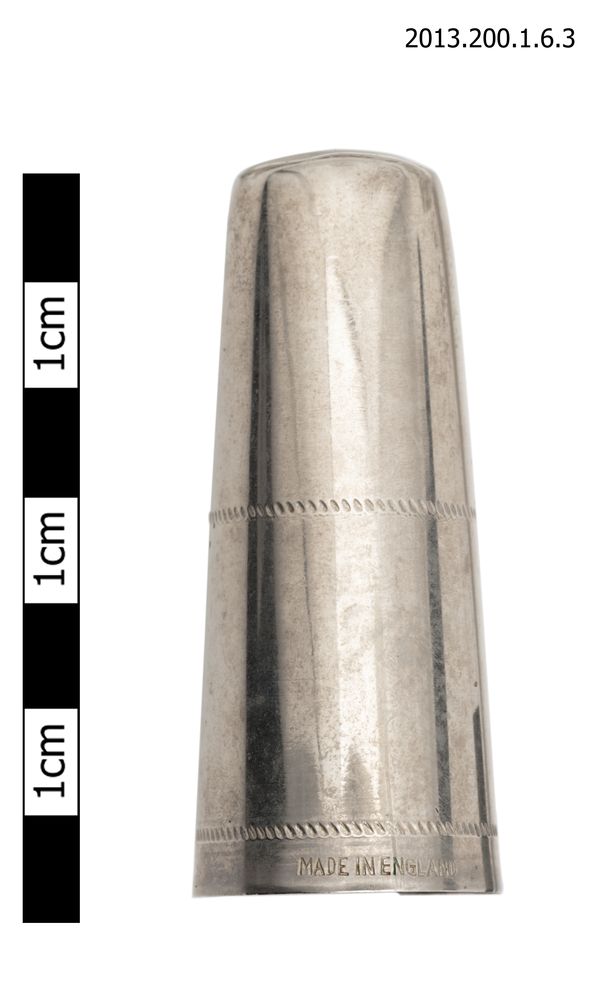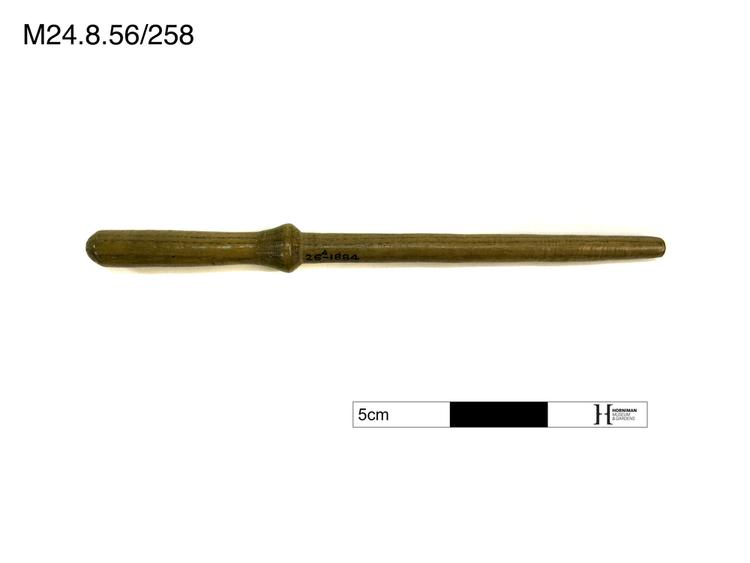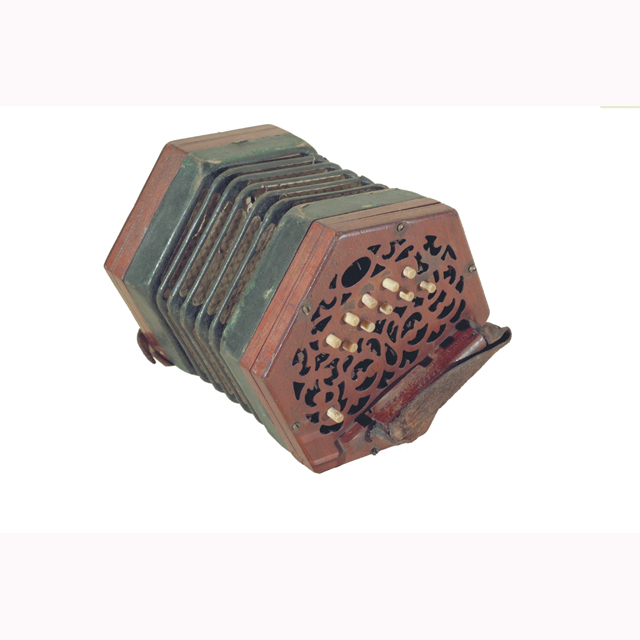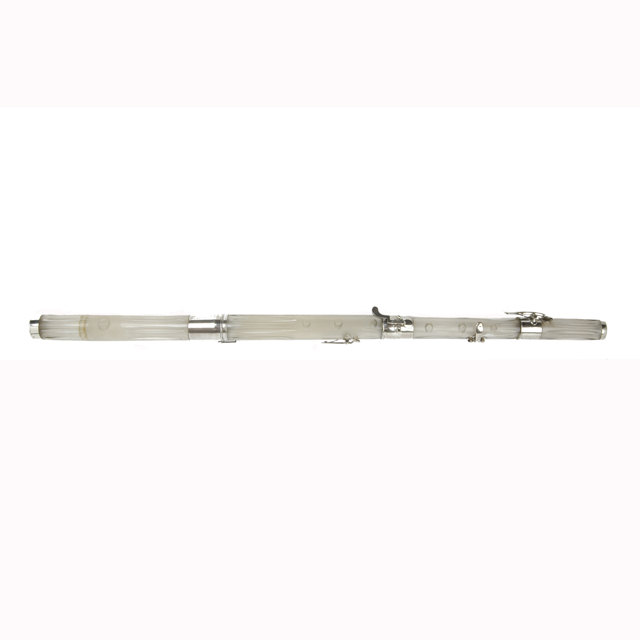
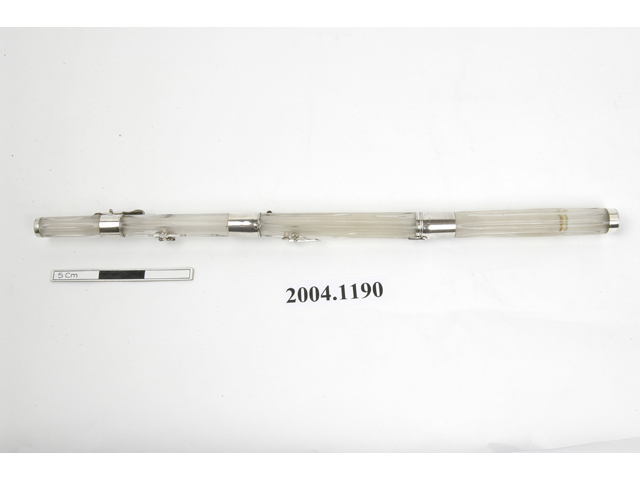
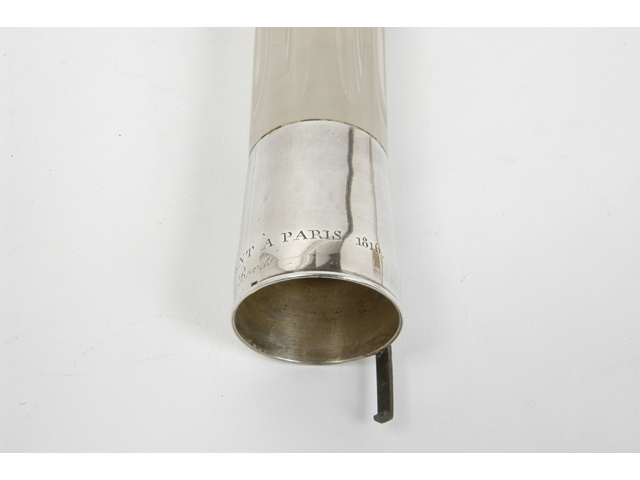


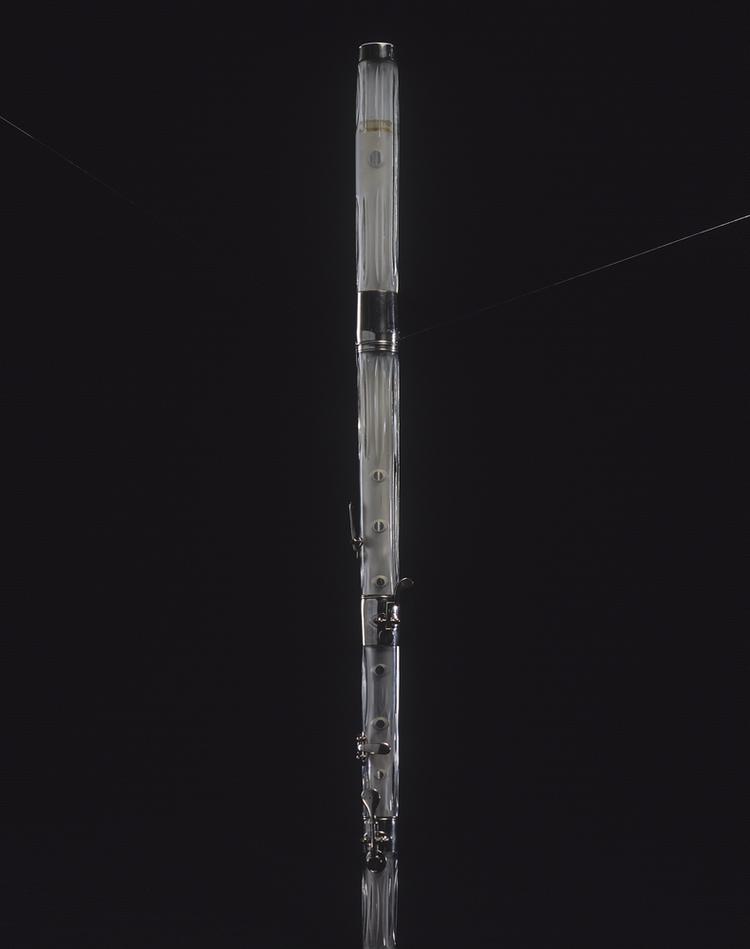
Flute. Glass with silver-plated keys, end cap and ferrules. Four keys, pillar mounted on bedplates with flat springs and circular flat flaps. Two with suede pads. Six tone holes. Four joints. String lapped tenons. Blue glass gem mounted in end cap. Head joint stamped: CLAURENT A PARIS 1816; and hand engraved: Brevete
overall: 630 x 35 x 35 mm
Glass was used for the body of this flute to avoid the cracking and warping to which wood and ivory were prone. The use of glass necessitated the design of innovative metal pillars to mount the keys. The flute was one of the few wind instruments thought to be acceptable for the early 19th-century gentleman amateur to play. The jewel-like appearance of Laurent's glass flutes would have heightened their appeal and status as aristocratic accoutrements.
Glass was used for the body of this flute to avoid the cracking and warping to which wood and ivory were prone. The use of glass necessitated the design of innovative metal pillars to mount the keys. The flute was one of the few wind instruments thought to be acceptable for the early 19th century gentleman amateur to play. The jewel-like appearance of Laurent's glass flutes would have heightened their appeal and status as aristocratic accoutrements.




